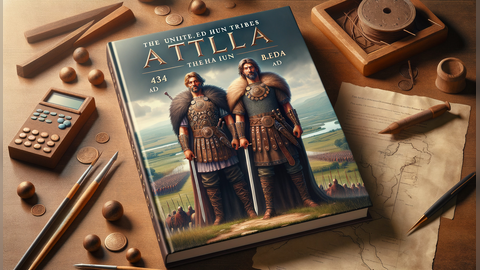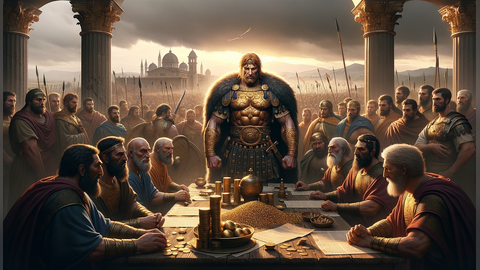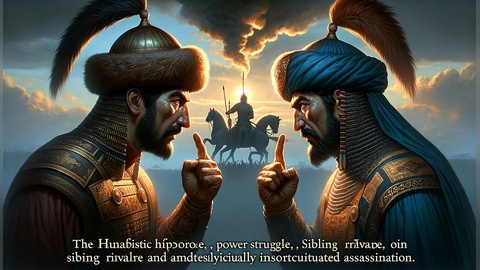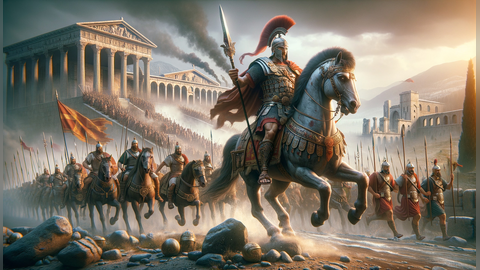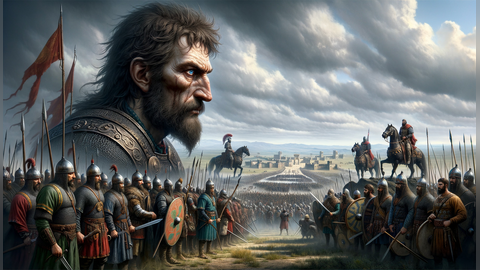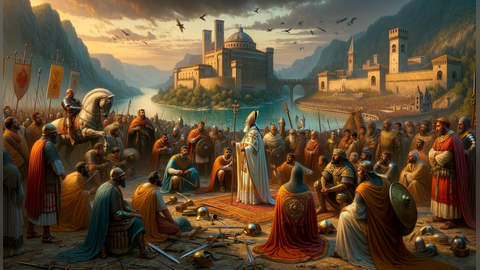About Us
Discover the Legacy of Attila the Hun: Exploring History's Fierce Leader and Innovator. Our site delves into Attila's profound influence on Europe, from his strategic dominance to his enduring cultural impact. Join us as we connect past valor with present innovation, celebrating the resilience that defines Hungarian spirit today.
Co-Rulership with Bleda
Attila began his reign in 434 AD, co-ruling with his brother Bleda. They succeeded their uncle, Rugila, as leaders of the united Hun tribes. This partnership marked the start of Attila's influence and strategic leadership.
Treaty of Margus (435 AD)
Attila and Bleda negotiated this treaty with the Eastern Roman Empire, securing annual tribute from the Romans. It paved the way for economic interaction and strengthened Hunnic influence in trade markets.
Sacking of Naissus (441 AD)
This significant conquest displayed the Hunnic army's strength, leading to further incursions into the Balkans. Naissus' fall marked a pivotal moment demonstrating Hunnic military capabilities.
Battle of Chersonesus (443 AD)
Attila decisively defeated the Eastern Roman forces, showcasing the military prowess of the Huns. This victory solidified Attila's position as a formidable leader against the Romans.
Peace Treaty Renegotiation (445 AD)
After victories in the Balkans, Attila renegotiated terms with the Eastern Roman Empire. This increased the annual tribute, showcasing his diplomatic agility and strategic acumen.
Assassination of Bleda (445 AD)
Attila became the sole ruler after the death of his brother, which some sources suggest was orchestrated by Attila himself. This consolidation of power allowed him to lead unchallenged.
First Invasion of Gaul (451 AD)
Attila led his forces into what is now France, challenging Roman and Visigothic armies. This move demonstrated his aggressive expansionist policies in Western Europe.
Battle of the Catalaunian Plains (451 AD)
This major battle against a coalition of Roman and Visigothic troops ended in a tactical draw, halting Attila’s advance into Gaul. It highlighted the limits and reach of Hunnic power.
Invasion of Italy (452 AD)
Attila's invasion led to the sacking of cities like Aquileia and reaching the Po River. It caused massive displacement and panic, illustrating his ability to instill fear and maintain pressure.
Meeting with Pope Leo I
The famous encounter in 452 AD saw Pope Leo I supposedly convincing Attila to retreat. This event became legendary as a moment of negotiation and spiritual intervention.
Retreat from Italy (452 AD)
Following the encounter with Pope Leo, and facing disease and famine, Attila retreated from Italy. This decision showed his pragmatic approach when confronted with tactical challenges.

